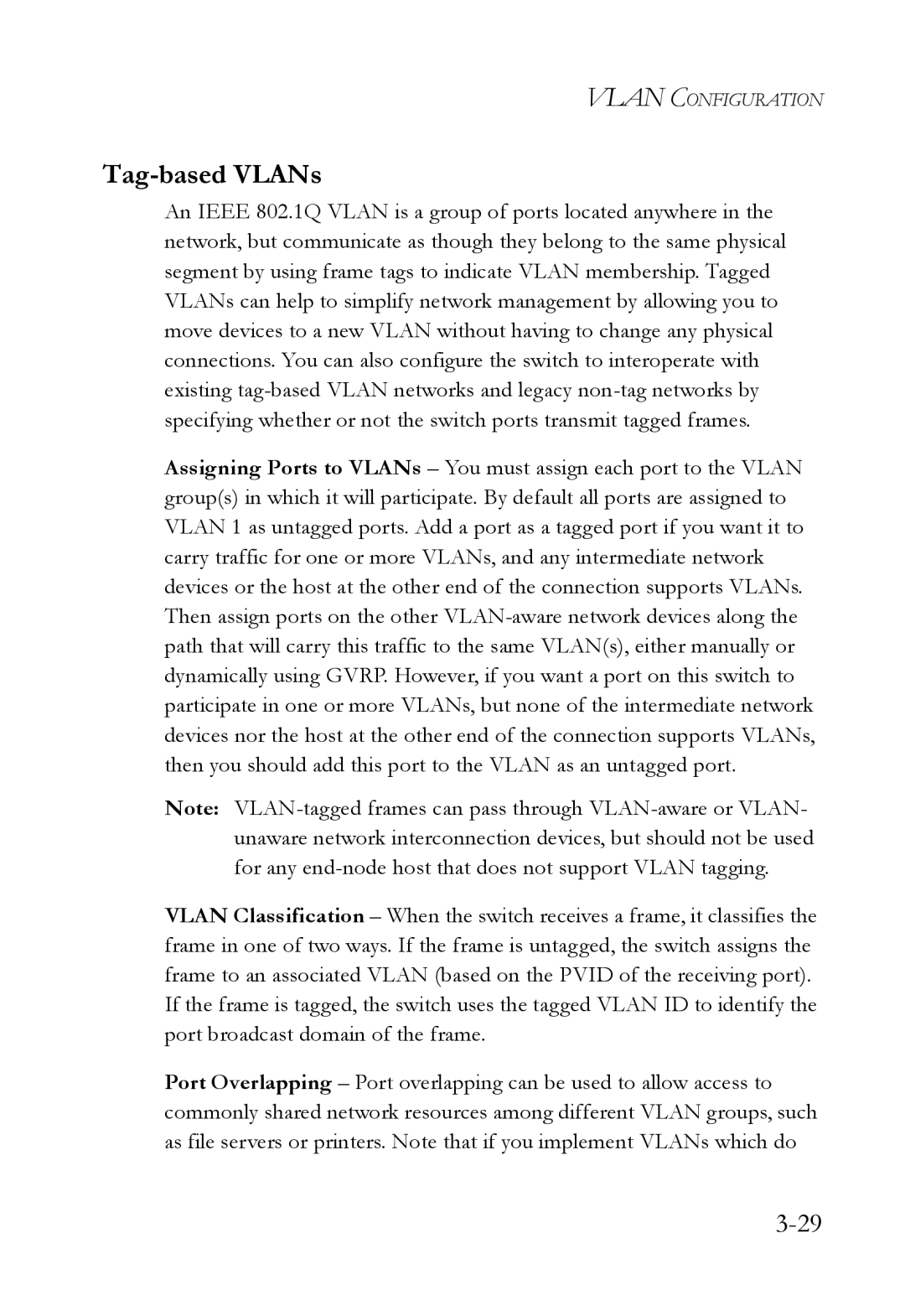VLAN CONFIGURATION
Tag-based VLANs
An IEEE 802.1Q VLAN is a group of ports located anywhere in the network, but communicate as though they belong to the same physical segment by using frame tags to indicate VLAN membership. Tagged VLANs can help to simplify network management by allowing you to move devices to a new VLAN without having to change any physical connections. You can also configure the switch to interoperate with existing
Assigning Ports to VLANs – You must assign each port to the VLAN group(s) in which it will participate. By default all ports are assigned to VLAN 1 as untagged ports. Add a port as a tagged port if you want it to carry traffic for one or more VLANs, and any intermediate network devices or the host at the other end of the connection supports VLANs. Then assign ports on the other
Note:
VLAN Classification – When the switch receives a frame, it classifies the frame in one of two ways. If the frame is untagged, the switch assigns the frame to an associated VLAN (based on the PVID of the receiving port). If the frame is tagged, the switch uses the tagged VLAN ID to identify the port broadcast domain of the frame.
Port Overlapping – Port overlapping can be used to allow access to commonly shared network resources among different VLAN groups, such as file servers or printers. Note that if you implement VLANs which do
